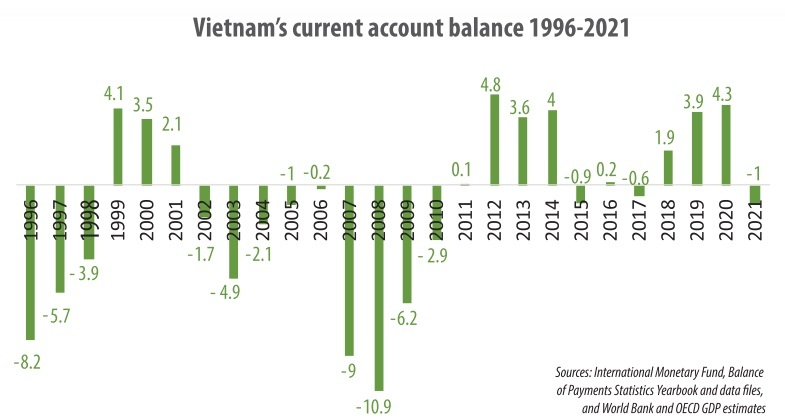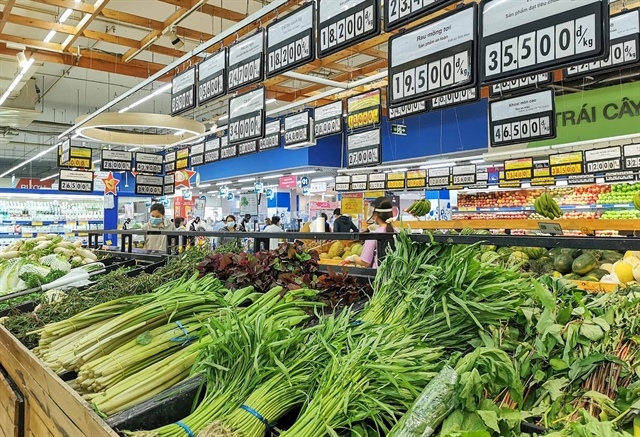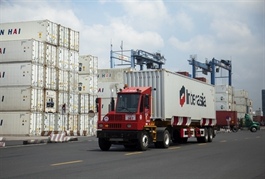Trade slowdown indicating current account deficit
Trade slowdown indicating current account deficit
A slowdown in Vietnam’s trade is expected to dent the country’s current account this year due to waning global demand and domestic production snags.

The Asian Development Bank (ADB) last week said Vietnam’s trade decline would affect the country’s current account this year.
“Both imports and exports are forecast to shrink by 7 per cent this year and next. Slowing trade could create a current account deficit that equals 1 per cent of GDP this year before moving back into surplus in 2024,” the bank said.
Last year, Vietnam’s GDP hit $409 billion, and the growth rate for this year is expected to be 6.5 per cent, about $435.58 billion. Thus, if the ADB forecast materialises, the current account deficit will be $4.35 billion.
According to various international estimates, Vietnam’s current account balance in 1996-2021 witnessed strong ups and downs (see Chart).
Trade slowdown indicating current account deficit
The ADB data showed that the current account deficit narrowed from the equivalent of 2 per cent of GDP in 2021 to an estimated 0.3 per cent last year, but the overall balance of payments still worsened. “The merchandise trade surplus was an estimated 6.4 of GDP [in 2022], and this partly offset a sharp decline in net receipts from services and lower remittances as global economic conditions deteriorated,” the ADB said. “Reduced inflows shrank the surplus in the financial and capital account from 8.4 per cent of GDP in 2021 to 2.4 per cent in 2022.”
A drop this big in the financial and capital account surplus overwhelmed the narrower current account deficit to flip the overall balance of payments from a surplus equal to 3.9 per cent of GDP in 2021 into a deficit estimated at 5.6 per cent in 2022. At the end of December 2022, foreign reserves were estimated to cover 2.8 months of imports, down from 3.9 months a year earlier, according to the ADB.
The Ministry of Industry and Trade (MoIT) last week reported that in Q1 2023, Vietnam’s total trade turnover reached $154.27 billion, down 13.3 per cent from nearly $178 billion recorded in the same period last year. In which, total export turnover hit $79.2 billion, down nearly 12 per cent on-year, and imports were valued at $75.1 billion, down 14.7 per cent on-year.
State budget revenues from export and import activities in Q1 this year are estimated at $2.79 billion, down 16.4 per cent on-year.
“In general, a sharp decline in the global economy has occurred faster than expected. Aggregate demand from overseas has dramatically plummeted, creating negative impacts for Vietnam’s industrial production in Q1,” said the MoIT.
The MoIT pointed out causes behind a drop in trade in Vietnam. “Prices of input materials and global energy staying at a high level have negatively impacted on production costs of enterprises,” it said in a report on Vietnam’s industrial production and trade for Q1.
“Global inflation remains high and monetary policies have yet to be loosened in many nations. The global economy is recovering slowly, and the collapse of some big banks in the world has led to a belt-tightening of consumers in purchasing Vietnamese products such as garments and textiles, footwear, furniture, electronics components in big markets such as the US and Europe, causing a reduction in import demand.”
In addition, the reopening of China has and will continue pressuring Vietnamese similar goods exports to global markets. Domestically, high lending rates have also affected the consumption of many types of products such as automobiles, garments, and footwear.
“Enterprises are facing difficulties in access to bank loans, while lending rates for the loans and input costs remain very high. Especially, businesses in the processing and manufacturing sector are bogged down,” the report said.
The government has set a target for the total goods export-import value to hit about $795 billion in 2023, up about 8 per cent on-year. In which the export turnover will be $398 billion, up over 8 per cent. The trade surplus will be about $1 billion, far lower than the $11.2 billion recorded last year.

























